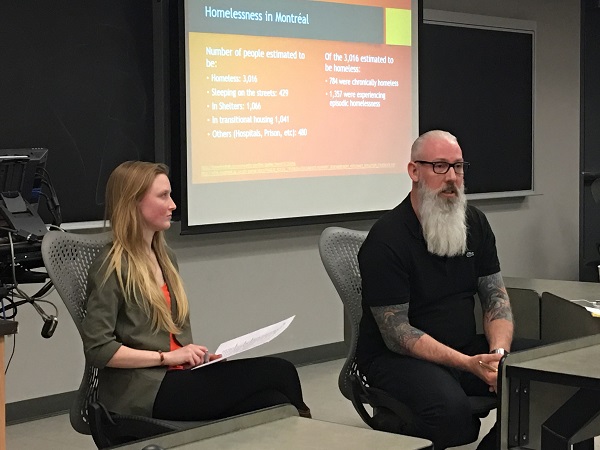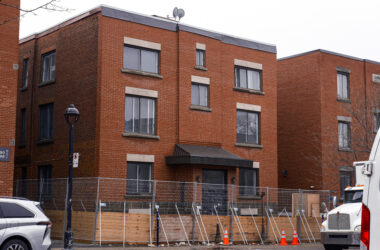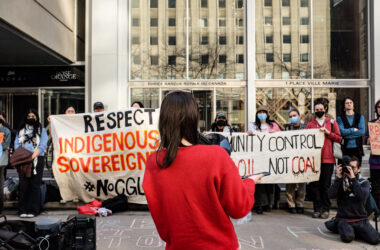5 Days for the Homeless McGill (5D4H) held a panel on Feb. 5 in the Bronfman building to discuss support for Montreal’s homeless population, featuring talks from Montreal City Councillors Benoit Langevin and Sterling Downey. 5D4H Co-Executive Director Meghan Bottomley moderated the public event. Speakers addressed homelessness in relation to topics like social resources, lobbying, and restoration.
Social Housing
Bottomley first directed attention to the Liberal government’s 10-year $40 billion affordable housing commitment and how the strategy will affect Montreal’s urban development. Langevin, city councillor for Bois-de-Liesse in northwest Montreal, anticipates that the city will have to spend more on affordable housing than the surrounding suburbs due to high demand. He also emphasized that ongoing negotiations between private actors and the provincial government prevent city officials from accurately predicting the investment size.
“Social housing cannot be built without the private sector because you need to have a project that is submitted by the contractor to your borough or to the city for a large-scale construction,” Langevin said. “[Montreal is] still negotiating […] with the provincial government as to how much money [from the national housing strategy] will be under the responsibility of the city of Montreal.”
Downey, city councillor for Desmarchais-Crawford south of downtown, and Projet Montreal’s spokesperson on homelessness, added that there are legal loopholes that allow contractors to forego contributing funds into the housing financial aid program, as mandated by the city’s inclusion plan. He aims to resolve this discrepancy by ensuring that affordable housing projects are built on unpolluted foundations.
“Our role [as city councillors] is to monitor construction so the government can invest money [in social and community housing],” Downey said. “We have to make sure that there’s land to build on. We have to make sure that the land is accessible, that there are partners [to propose affordable housing projects].”
Homelessness and Police
Bottomley asked how police interactions can mitigate tensions between law enforcement officers and homeless individuals.
“Whenever I go into the metro station and I see someone who’s homeless, I always see a police officer.” Bottomley said. “What can the city do in terms of the police force to improve relations [with] the homeless community […] and take these things more seriously? [….] Is there are way the city can enforce or change the policies in investigating [discrimination against the homeless]?”
In response, Langevin noted that police interventions often focus on redirecting homeless individuals from public spaces to shelters. Pointing to available funds from Montreal’s falling crime rates and the subsequent cuts in police force size, Langevin supports hiring more social workers who can understand the turmoil a homeless person is going through.
“The speed, that pace from [going from living on the streets to living in housing] can take […] a week, 4 years, or 30 years, and you can’t rush that process,” Langevin said. “I don’t think that even our outreach workers or our police officers are not sufficiently aware of the [cultural] values that makes every intervention very different from [the] other.”
Addressing similar concerns over cultural values, Downey affirmed that law enforcement officials must respect Indigenous values and culture when interacting with the homeless. He commended Clinique Droits Devant’s focus on rehabilitation over criminalization on public space occupation offenses. In addition, Downey believes that Équipe mobile de référence et d’intervention en itinérance (EMRII), a Service de police de la Ville de Montréal division that refers homeless individuals to appropriate services, has trained officers to sensitively approach those living in the metro. He believes that the real problem is the lack of first responders who are trained to deal with people with different backgrounds
“Our police services are where we need to invest more in,” Downey said. “We need to continue to educate our services and make sure they know how to deal with [specific situations]. Dealing with someone who’s white, for example, and homeless, and someone who’s First Nations and homeless [require] two different approaches.”








